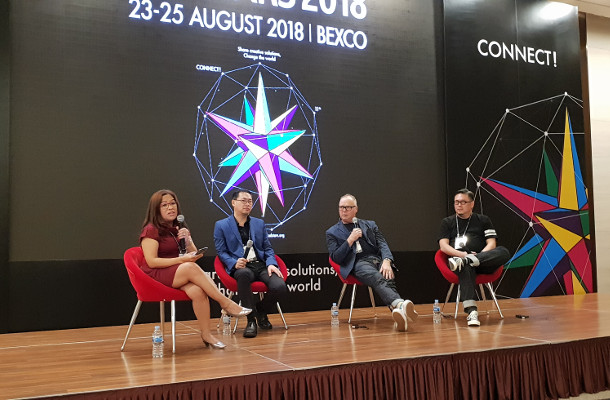
Is Asian Creativity Hitting Hard Enough?

Humour, the power of ‘no’ and an appetite for a fight – are these the missing ingredients in Asia’s quest to compete with the creative heavyweights of the world?
Adobo Magazine editor Angel Guerrero took to the Ad Stars stage in Busan, South Korea to tackle Asia’s underperformance in international award shows despite the region’s economic growth. Her panellists, JWT APAC’s Guan Hin Tay, Saatchi New Zealand’s Toby Talbot and Hakuhodo APAC’s Woon Hoh, discussed the issues holding Asian creative back, as well as sharing insights about how to create more effective awards entries.
For Guan Hin Tay and Woon Hoh, the greatest barrier lies in a cultural tendency to avoid conflict.
“We have to learn how to say no. We have to learn not to compromise,” said Woon, who said that this was something with roots in childhood – and that he took heart in obstinacy from his own children.
“I think we have to fight for what’s right,” said Guan Hin – gearing up for his punchy ‘Gung-Ho’ talk later in the day. “In Asia we always think that the client is right.”
Toby, meanwhile, had a simple suggestion. Humour. Taking inspiration from Thailand – one of two Asian countries to feature in the Gunn Report’s top ten – and the hypnotically bonkers Friendshit ad, he suggested that other countries in Asia might try giving overblown sentimentality a rest and start experimenting with their funny bones. And, as a side effect, it might help Asian agencies find favour with international juries. “If there’s anything we can learn from Thailand it’s that humour is a great leveller.”
At the suggestion that the biggest barrier to Asian creative success was low budgets, the panel had a mixed response. Pointing to New Zealand’s high-performing creative, Toby said that low budgets forced teams to be truly inventive. Meanwhile, Woon Hoh pointed out that budgets also had an impact on attracting talent.
Never one to shy away from a potentially awkward question, Angel asked if Asia’s historic reputation for scam, particularly in print, was something that was continuing to overshadow the region’s creative.
Speaking in a measured fashion, Woon Hoh spoke about the difference between ‘pure’ scam – work for non-existent clients, work that was never approved – and proactive, off-brief work. Toby criticised agencies that ‘chased awards’, whilst agreeing that clients have ‘every right to expect agencies to be proactive’.
Ultimately, scam is a symptom of an agency that has failed to understand the modern era, argued Guan Hin. “Awards are all about ‘me’. Today’s world is all about ‘you’,” he said, explaining that work created solely to win awards or scam work was not created with the consumer at the centre.
There were, though, plenty of shafts of light. While the region might not be performing at international award shows like Cannes Lions, but the panel said there was plenty to get excited about. For Toby, the sophisticated attitude to technology and an ability innovate and incorporate tech in a meaningful fashion in countries like South Korea was something that the rest of the world could learn from.
And both Guan Hin and Woon pointed out that there was lots of inspiring, culturally relevant work coming out of Asia’s less developed but rapidly growing economies, like Vietnam and Pakistan. All of which suggests a future of punchy, potent creative work from some unexpected corners of the region.













